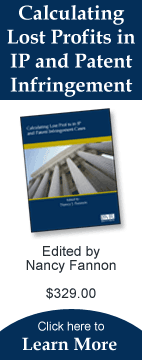Jackie Maguire, CEO of Coller IP Management and a member of BVR’s IP Management and Valuation editorial advisory board, lists important considerations in the order organizations should address when coordinating IP and business strategies:
- Managers should conduct a complete inventory of their IP assets, meaning intangible property, including intellectual property.
- Once identified, a value needs to be placed on the intangible property, not in the aggregate, but individually. Next steps in IP management depend upon expert valuation of the assets in hand. (Don’t look to the balance sheet for this; it’s probably not there.)
- IP value needs to be protected. Business decisions need to be made as to what IP to protect and to what extent. IP Metrics refers to this as triaging. Patent, design and trademark applications, by jurisdiction, need to be filed and kept current. Trade secrets protections need to be implemented and enforced. Contracts need to be reviewed.
- Business strategies to exploit the IP can be implemented.
Intercompany transfers of assets are common and are under intense and increasing scrutiny by tax authorities around the world. The amount of income tax paid to each country affected by a transfer is determined by the prices charged within multinational companies. Transfer pricing rules and guidelines govern virtually all intercompany transactions, including those for intangible property.
Most tax authorities follow guidelines set by the OECD, of which the U.S. is a member, which require “arm’s length” transfer pricing. This means that prices recorded should be the same as prices that would have been negotiated between unrelated parties.
The first line of defense against an audit of transfer pricing is documentation. The preferred method for benchmarking IP transactions and documenting their “arm’s length” nature is to locate comparable royalty agreements such as those found in the ktMINE database.
- The full text of the agreements is available and searchable (for related parties, for example)
- Search sets and search rationale can be archived
- The number of agreements in the database exceeds 10,000, and it is continuously updated
- Tax authorities now rely upon ktMINE for the efficiencies it provides
The Dish Network case discussed here last week (IP insurance, indemnification, and its relationship to advertising) prompted IP Blog to investigate what insurance protection is available. An article in SmartBusiness (Philadelphia) listed some policies IP and risk managers can research now:
- “Defense and indemnity” policies are designed to help with claims against the insured for “use, distribution, advertising and/or sale” of its products or services.
- “Infringement abatement policies” cover an insured’s litigation costs for bringing an infringement action. (Here, the insurers share in any recovery.)
- Policies for patent infringement defense costs.
More details on how prudent risk management dovetails with IP management will be covered in an analysis in the January issue of BVR’s IP Management and Valuation. To get a free issue, just email IPVW.
In a high-profile, infringement litigation, a jury awarded the plaintiff (Oracle USA) $1.3 billion in damages against the defendant SAP, the world’s largest business application software manufacturer. Not only was the jury award the largest ever for copyright infringement, but its magnitude nearly exceeded the defendant’s 4Q2010 net income.
On appeal, SAP claimed the award was “grossly excessive” and based on “fictitious” evidence. In particular, since Oracle admitted that it never would have licensed the software in the “real world” and no comparable licenses existed, its expert simply “invented” the price of a hypothetical license, the defendant argued, relying on factors such as the amount that Oracle executives claimed they would have charged for a license (unsupported by any benchmark deals), and the value of the infringed technology as a whole, including the costs of acquisition and development.
The U.S. District Court agreed, finding the plaintiff’s expert “confused the jury” by presenting “fictitious and speculative negotiating factors” that he purportedly derived from Georgia-Pacific ,but which actually came from the “self-serving” testimony by Oracle executives. Look for the complete digest of and court opinion in Oracle USA, Inc. v. SAP AG, 2011 WL 3862074 (N.D. Cal.) (Sept. 1, 2011), at BVLaw.
The University of Rochester Office of Technology Transfer recently published a “day in the life” chronicle of what a licensing manager does. The list not only serves as a foundation for a detailed job description, it also offers an empathetic view for stakeholders who rely on a research center’s office of technology transfer:
- Maintain internal and external relationships in order to commercialize University technologies
- Value University inventions to determine patentability and business potential
- Assist in patent application and prosecution
- Market available technologies
- Identify and contact potential commercial partners
- Audit compliance with license terms
|
Contact Us:
Business Valuation Resources, LLC
1000 SW Broadway
Suite 1200
Portland, OR 97205
(503) 291-7963
.......................
Ask the Editor
Valuation of IP
|

|